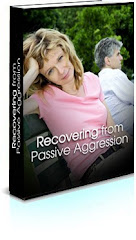If you are in a passive aggressive marriage, the damage is real...
and we know how to repair it.Perhaps you were too young? Never realized that the small put downs and "funny" public humiliations were for real? and that they would be constant, regardless your protests?
If you think passive aggressive behavior is the cause of your unhappy situation there are steps you can take to manage its impact on your life. You can learn the conflict resolution skills you need to manage your life again.
Do you want to deepen your relationship with your loved one? Do you want to stop the confusion you feel about your love life? Do you want to regain some of the connection you had when you first fell in love? Of course you do! And, you can learn how today by following the easy steps outlined in this e-book.
If you are ready to break free of the chains of emotional bondage, if you are tired of feeling humiliated and alone, if you are ready to take control of your emotional well-being once and for all, then this e-book is for you. Get more info at http://passiveaggresive.com/






.jpg)


